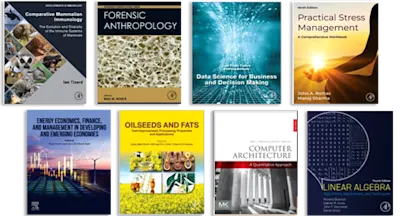
Three-Dimensional Microfabrication Using Two-Photon Polymerization
- 2nd Edition - October 29, 2019
- Imprint: William Andrew
- Editor: Tommaso Baldacchini
- Language: English
- Paperback ISBN:9 7 8 - 0 - 1 2 - 8 1 7 8 2 7 - 0
- eBook ISBN:9 7 8 - 0 - 1 2 - 8 1 7 8 2 8 - 7
Three-Dimensional Microfabrication Using Two-Photon Polymerization, Second Edition offers a comprehensive guide to TPP microfabrication and a unified description of TPP microfabr… Read more
Purchase options

Three-Dimensional Microfabrication Using Two-Photon Polymerization, Second Edition offers a comprehensive guide to TPP microfabrication and a unified description of TPP microfabrication across disciplines. It offers in-depth discussion and analysis of all aspects of TPP, including the necessary background, pros and cons of TPP microfabrication, material selection, equipment, processes and characterization. Current and future applications are covered, along with case studies that illustrate the book's concepts. This new edition includes updated chapters on metrology, synthesis and the characterization of photoinitiators used in TPP, negative- and positive-tone photoresists, and nonlinear optical characterization of polymers.
This is an important resource that will be useful for scientists involved in microfabrication, generation of micro- and nano-patterns and micromachining.
- Discusses the major types of nanomaterials used in the agriculture and forestry sectors, exploring how their properties make them effective for specific applications
- Explores the design, fabrication, characterization and applications of nanomaterials for new Agri-products
- Offers an overview of regulatory aspects regarding the use of nanomaterials for agriculture and forestry
Materials scientists, food and agricultural scientists, environmental scientists
1.1 Laser-Based Micro-Additive Manufacturing Technologies
1.2 Microstereolithography
1.3 Fundamentals of Two-Photon Fabrication
2.1 Free Radical Photopolymerization of Multifunctional Monomers
2.2 Design, Synthesis, and Characterization of Photoinitiators for Two-Photon Polymerization
2.3 Materials for Two-Photon Polymerization
3.1 Reaction Mechanisms and In Situ Process Diagnostics
3.2 Metrology
3.3 Polymers Characterization by Coherent Raman Processes
4 Mask-Directed Micro-3D Printing
5 Geometrical Analysis and Computation Using Layered Depth-Normal Images for Three-Dimensional Microfabrication
1. 6 Motion Systems: An Overview of Linear, Air Bearing, and Piezo Stages
7 Focusing Through High-Numerical Aperture Objective
8 Linewidth and Writing Resolution
9 Making Two-Photon Polymeryzation Faster
10 Microstructures, Post-TPP Processing
11 A Collection of Microsculptures
12.1 Micro-Optics Via Ultrafast Laser Writing: Miniaturization, Integration, and Multifunctionalities
12.2 Remotely Driven Micromachines Produced by Two-Photon Microfabrication
12.3 Microfluidics
12.4 Cell Motility and Nanolithography
13.1 Fabrication of 3D Micro-Architected/Nano-Architected Materials
13.2 Two-Photon Polymerization as a Component of Desktop Integrated Manufacturing Platforms
13.3 Engineering Microenviroments for Cancer Study
13.4 Materials Development for Additive Manufacturing: a case study for TPP
Appendix A Basic Photoshop for Electron Microscopy
Appendix B Numerical Examples
- Edition: 2
- Published: October 29, 2019
- Imprint: William Andrew
- Language: English
TB